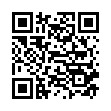|
Informatics, Computer Science and Control
Modelling of a communication system of agents moving through terrain with obstacles
A. V. Kuznetsov
Voronezh State University, Voronezh, Russia
Abstract:
The article proposes the modeling of the communication system of moving agents using
interconnected two-dimensioned cellular automata that operate at different discrete
times. One of the automata simulates the movement of variously organized groups of
agents in the terrain with obstacles of different heights and passabilities on it.
Agents tend to move in the shortest possible time, trying, at the same time, to
maintain the formation, and, possibly, they have additional goals. The second
automaton models the communication system of agents from the first automaton. Agents
in the communication system model are communication equipment of agents from the
motion model. In this cellular automaton, a column of cells corresponds to a
communication channel, and every cell has parameters corresponding to the quality of
the channel. We use the software environment "Psychohod" to simulate the
above-mentioned automata. To organize the interaction of motion and communication
models, we start two instances of the process of the "Psychohod" software. The
data exchange between these processes occurs via the shared memory
QSharedMemory. We demonstrate the application of the proposed model to
determine the nearly linear dependence of the average number of communication breaks
on the number of obstacles with the assumption that the communication requires the
direct visibility of agents.
Keywords:
autonomous agents, cellular automaton, motion model, communication system model.
Received: 27.03.2018
Revised: 05.05.2018
Citation:
A. V. Kuznetsov, “Modelling of a communication system of agents moving through terrain with obstacles”, Chelyab. Fiz.-Mat. Zh., 3:2 (2018), 237–248
Linking options:
https://www.mathnet.ru/eng/chfmj103 https://www.mathnet.ru/eng/chfmj/v3/i2/p237
|

| Statistics & downloads: |
| Abstract page: | 199 | | Full-text PDF : | 62 | | References: | 35 |
|




 Contact us:
Contact us: Terms of Use
Terms of Use
 Registration to the website
Registration to the website Logotypes
Logotypes







 Citation in format
Citation in format 